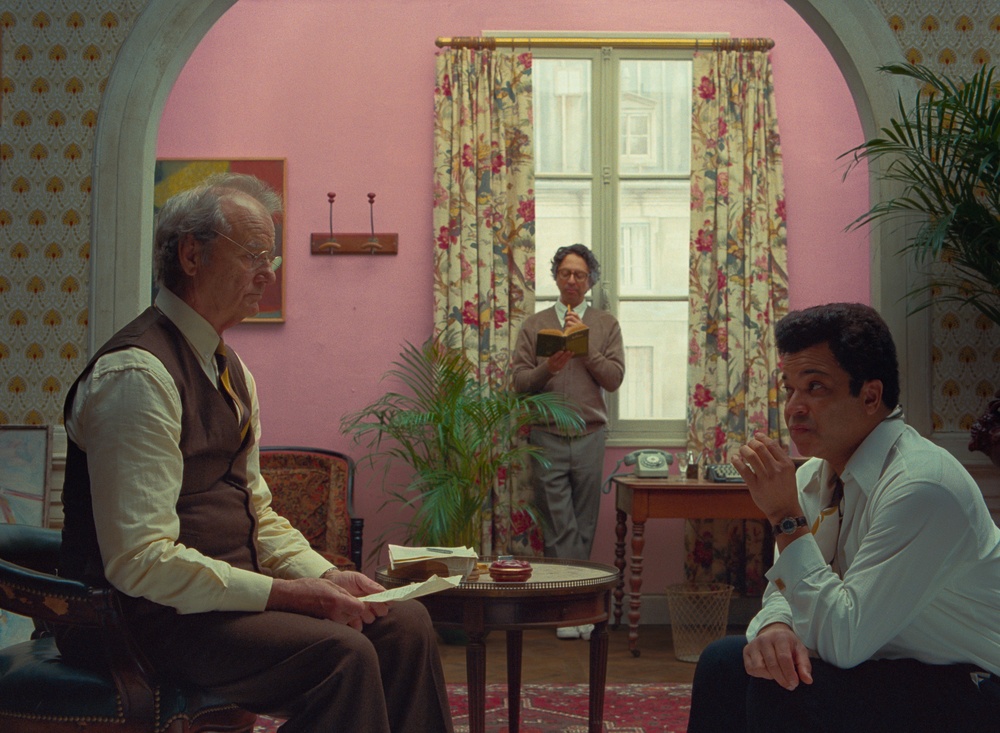The French Dispatch

Bill Murray and Jeffrey Wright star in THE FRENCH DISPATCH. (Photo: Searchlight Pictures)
If you’re not familiar with the Wes Anderson oeuvre, you might not appreciate The French Dispatch, a delightfully offbeat comedy that feels like a spiritual companion to The Grand Budapest Hotel, maybe crossed with “60 Minutes.”
Indeed, the auteur’s idiosyncrasies are as plentiful as ever in this vibrant and evocative compilation of comedic vignettes that overdoses on quirks and gimmicks by any traditional measure, yet also maintains such a steadfast commitment to Anderson’s unique vision that it works in spite of itself.
As the film opens, we’re told of the death of Arthur Howitzer Jr. (Bill Murray), the publisher of the titular monthly insert to his family’s Kansas newspaper. As the staff of expatriate journalists in the French town of Ennui prepares his obituary, we’re given a peek inside the contents of the final issue.
The first episode is a compelling satire of modern-art appreciation as told by a writer (Tilda Swinton) whose story concerns a convict (Benicio Del Toro) who also happens to be a talented painter, and his muse is a prison guard (Lea Seydoux). His art prompts an effort by an investor (Adrien Brody) to free him, with unfortunate consequences.
An essayist (Frances McDormand) spins a tale of revolution among students on a private-school campus, led by a womanizing chess prodigy (Timothee Chalamet). Then a food writer (Jeffrey Wright) takes us behind the scenes of his dinner with a local police commissioner (Mathieu Amalric), which turns into a kidnapping saga involving a political captive (Willem Dafoe).
At its core, The French Dispatch is an affectionate tribute to the creative camaraderie and old-fashioned charms of print journalism, which carries an inevitable bittersweet nostalgia. Some segments are more amusing than others, just like a high-brow general interest publication.
Every frame is crafted with a meticulous sense of artistry, from the boxy aspect ratio to seamless transitions between color, black-and-white, and even animation. The cast features some new collaborators working alongside returnees from Anderson’s usual ensemble.
The rapid-fire dialogue and verbose narration require high-level vocabulary comprehension, while the exaggerated narrative reality isn’t physically or emotionally grounded, rendering it resistant to logical scrutiny.
The peaks and valleys inherent in Anderson’s scattershot and self-reflexive screenplay can wear down those not on the same offbeat wavelength. However, by now, the filmmaker’s reputation precedes him, and this ambitious effort — inventive and frequently dazzling — caters to fan expectations.
Rated R, 108 minutes.